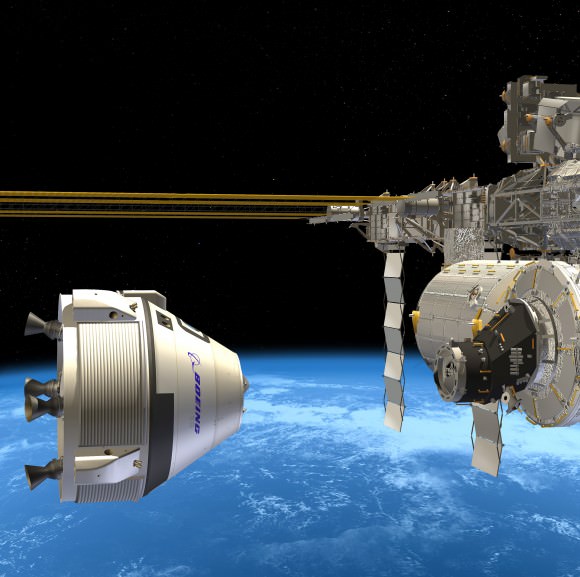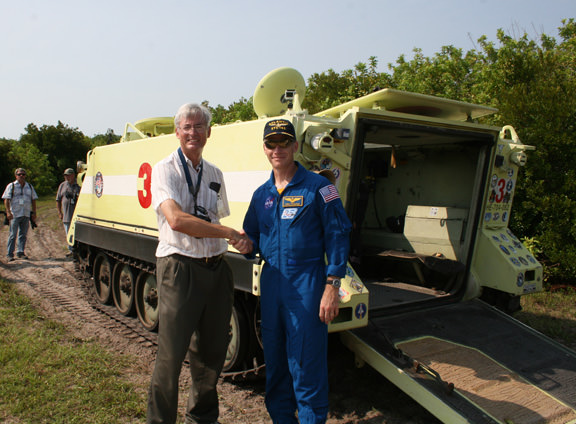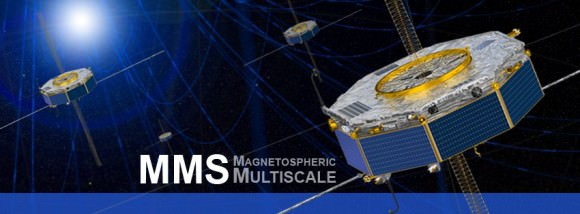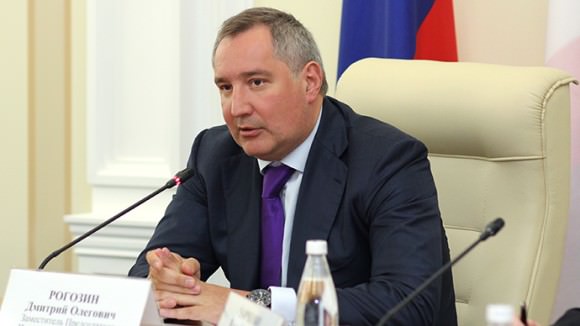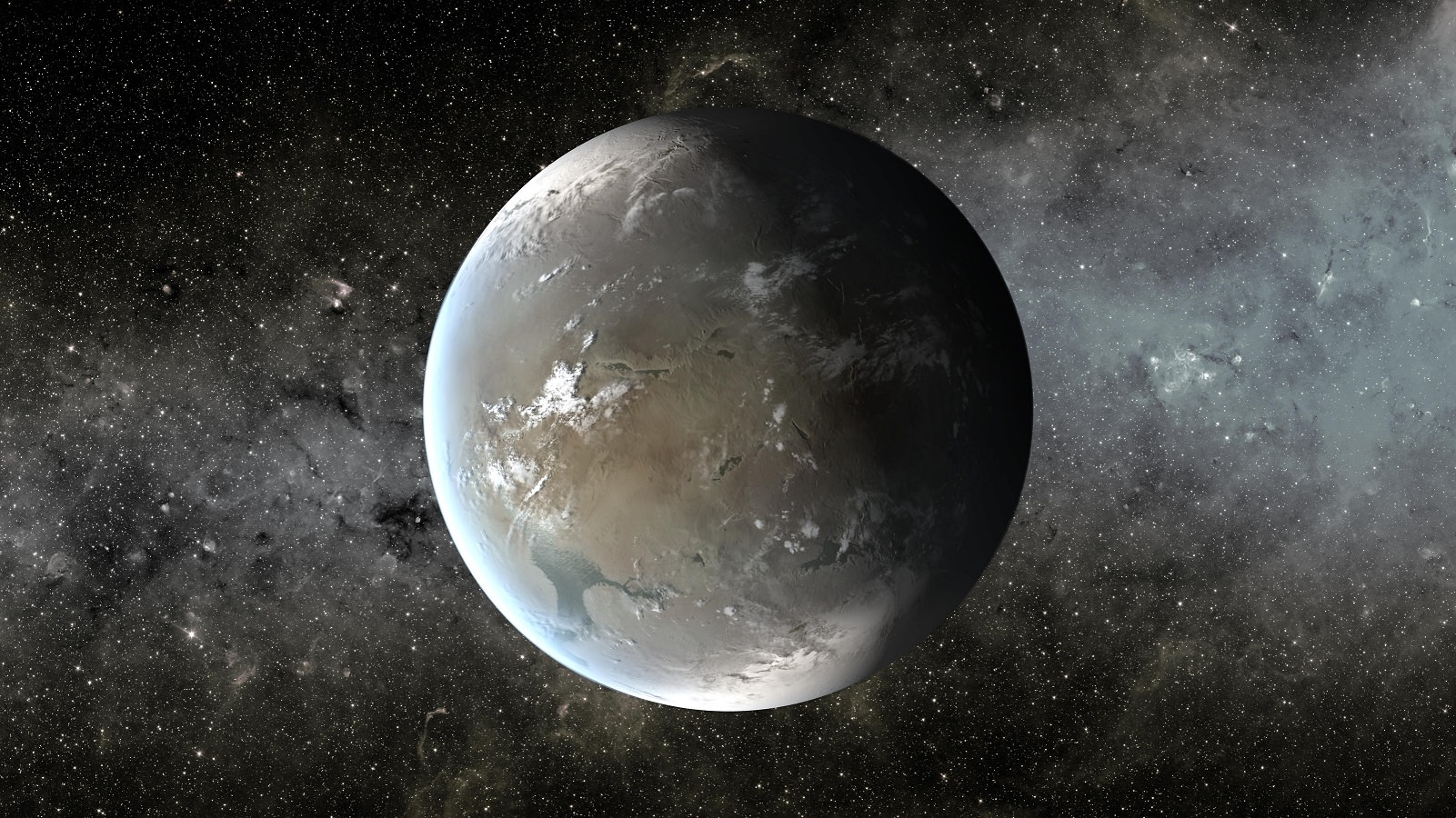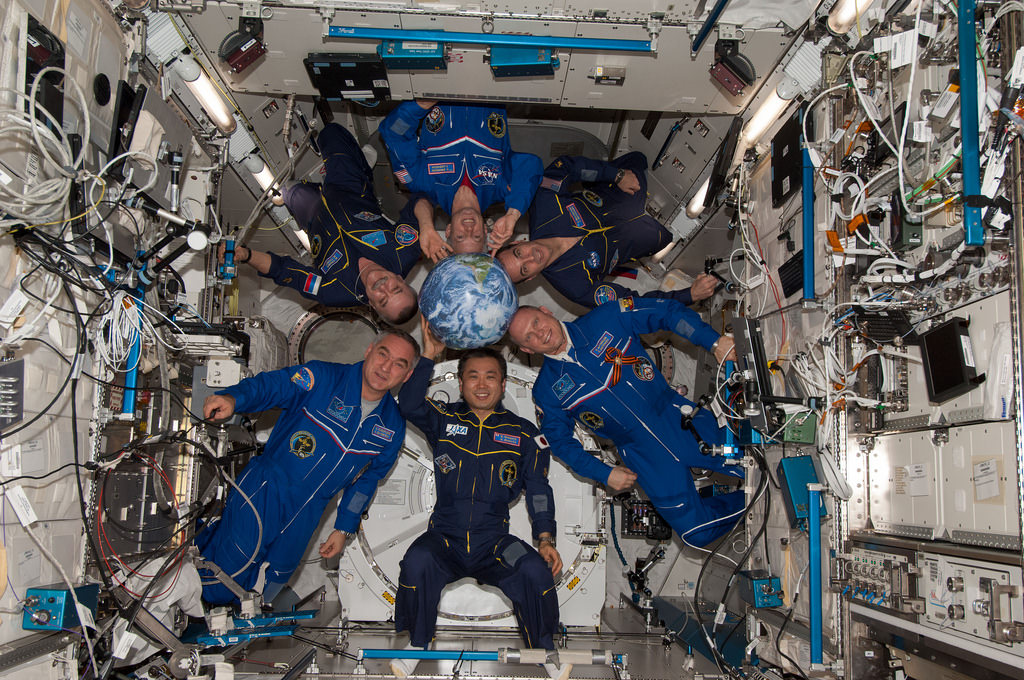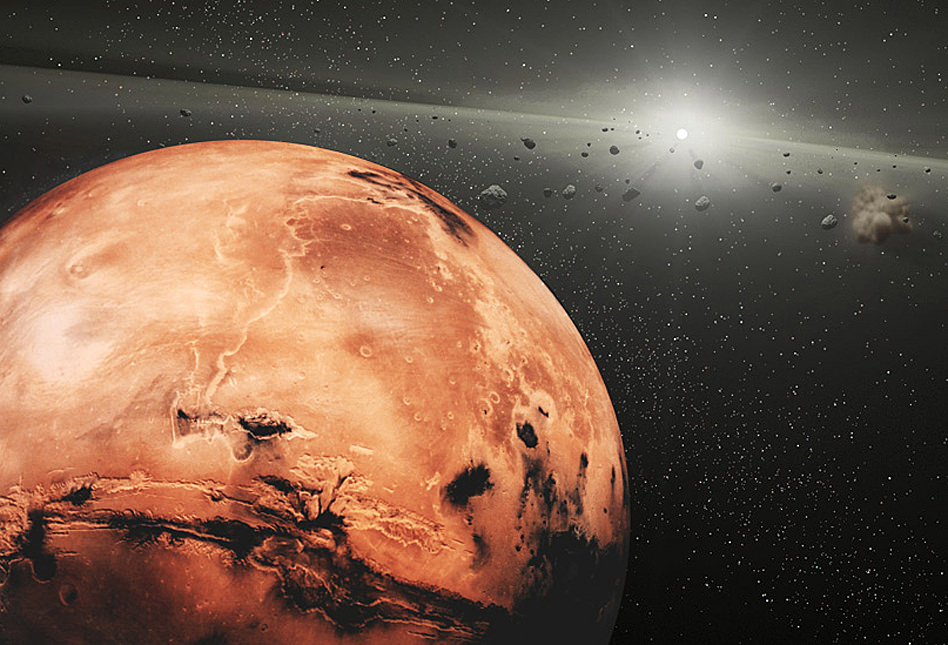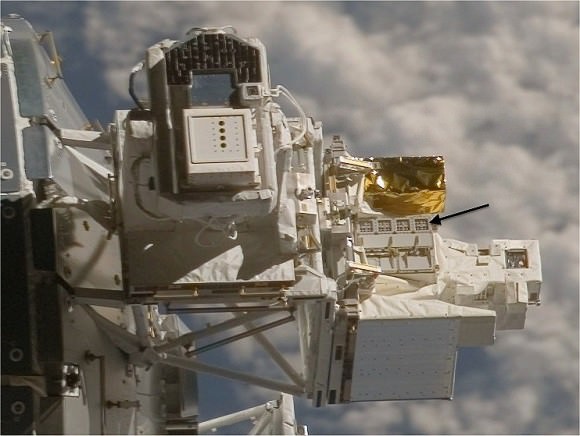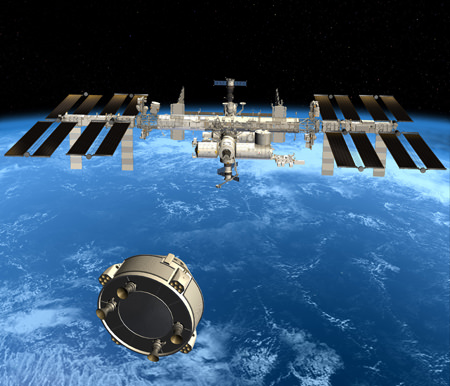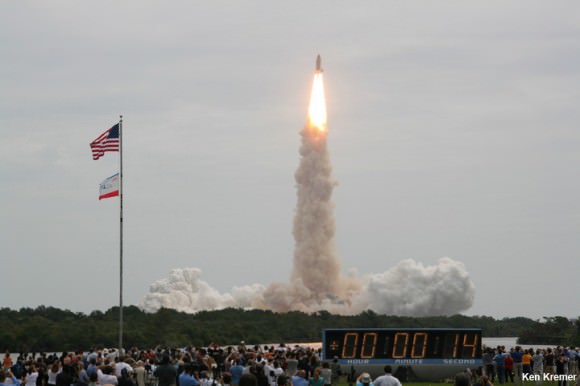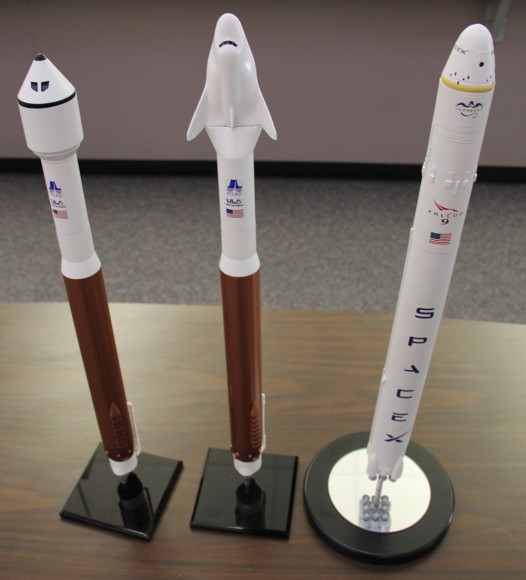Boeing CST-100 manned space capsule in free flight in low Earth orbit will transport astronaut crews to the International Space Station. Credit: Boeing
Story updated[/caption]
KENNEDY SPACE CENTER, FL – Boeing expects to begin “assembly operations of our commercial CST-100 manned capsule soon at the Kennedy Space Center,” Chris Ferguson, commander of NASA’s final shuttle flight and now director of Boeing’s Crew and Mission Operations told Universe Today in an exclusive one-on-one interview about Boeing’s space efforts. In part 1, Ferguson described the maiden orbital test flights to the ISS set for 2017 – here.
In part 2, we focus our discussion on Boeings’ strategy for building and launching the CST-100 ‘space taxi’ as a truly commercial space endeavor.
To begin I asked; Where will Boeing build the CST-100?
“The CST-100 will be manufactured at the Kennedy Space Center (KSC) in Florida inside a former shuttle hanger known as Orbiter Processing Facility 3, or OPF-3, which is now [transformed into] a Boeing processing facility,” Ferguson told me. “Over 300 people will be employed.”
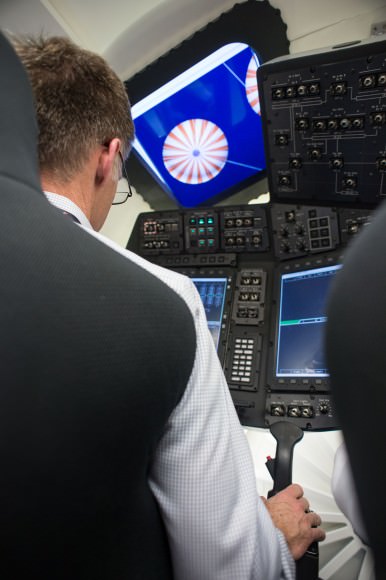
During the shuttle era, all three of NASA’s Orbiter Processing Facilities (OPFs) were a constant beehive of activity for thousands of shuttle workers busily refurbishing the majestic orbiters for their next missions to space. But following Ferguson’s final flight on the STS-135 mission to the ISS in 2011, NASA sought new uses for the now dormant facilities.
So Boeing signed a lease for OPF-3 with Space Florida, a state agency that spent some $20 million modernizing the approximately 64,000 square foot hanger for manufacturing by ripping out all the no longer needed shuttle era scaffolding, hardware and equipment previously used to process the orbiters between orbital missions.
Boeing takes over the OPF-3 lease in late June 2014 following an official handover ceremony from Space Florida. Assembly begins soon thereafter.
When will CST-100 spacecraft manufacturing begin?
“The pieces are coming one by one from all over the country,” Ferguson explained. “Parts from our vendors are already starting to show up for our test article.
“Assembly of the test article in Florida starts soon.”
The CST-100 is being designed at Boeing’s Houston Product Support Center in Texas.
It is a reusable capsule comprised of a crew and service module that can carry a mix of cargo and up to seven crew members to the International Space Station (ISS) and must meet stringent safety and reliability standards.
How will the pressure vessel be manufactured? Will it involve friction stir welding as is the case for NASA’s Orion deep space manned capsule?
“There are no welds,” he informed.
“The pressure vessel is coming from Spincraft, an aerospace manufacturing company in Massachusetts.”
Spincraft has extensive space vehicle experience building tanks and assorted critical components for the shuttle and other rockets.
“The capsule is produced by Spincraft using a weld-free process. It’s made as a single piece by a proprietary spun form process and machined out from a big piece of metal.”
The capsule measures approximately 4.56 meters (175 inches) in diameter.
“The service module will be fabricated in Florida.”
The combined crew and service modules are about 5.03 meters (16.5 feet) in length.
“In two years in 2016, our CST-100 will look like the Orion EFT-1 capsule does now at KSC, nearly complete [and ready for the maiden test flight]. Orion is really coming along,” Ferguson beamed while contemplating a bright future for US manned spaceflight.
He is saddened that it’s been over 1000 days since his crew’s landing inside shuttle Atlantis in July 2011.
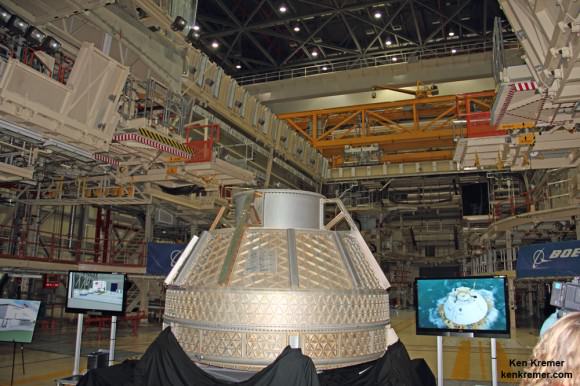
With Boeing’s long history in aircraft and aerospace manufacturing, the CST-100 is being designed and built as a truly commercial endeavor.
Therefore the spacecraft team is able to reach across Boeing’s different divisions and diverse engineering spectrum and draw on a vast wealth of in-house expertise, potentially giving them a leg up on commercial crew competitors like SpaceX and Sierra Nevada Corp.
Nevertheless, designing and building a completely new manned spaceship is a daunting task for anyone. And no country or company has done it in decades.
How hard has this effort been to create the CST-100? – And do it with very slim funding from NASA and Boeing.
“Well any preconceived notion I had on building a human rated spacecraft has been completely erased. This is really hard work to build a human rated spacecraft!” Ferguson emphasized.
“And the budget is very small – without a lucrative government contract as used in the past to build these kind of spacecraft.”
“Our budget now is an order of magnitude less than to build the shuttle – which was about $35 to $42 Billion in 2011 dollars. The budget is a lot less now.”
Read more about the travails of NASA’s commercial crew funding situation in Part 1.
The team size now is just a fraction of what it was for past US crewed spaceships.
“So to support this we have a pretty small team.”
“The CST-100 team of a couple hundred folks works very hard!”
“For comparison, the space shuttle had 30,000 people working on it at the peak. By early 2011 there were 11,000. We flew on STS-135 with only 4,000 people in July 2011.”
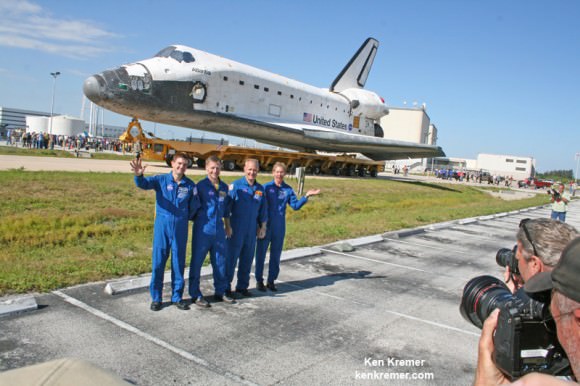
Credit: Ken Kremer – kenkremer.com
Boeing’s design philosophy is straightforward; “It’s a simple ride up to and back from space,” Ferguson emphasized to me.
Next we turned to the venerable Atlas V rocket that will launch Boeing’s proposed space taxi. But before it can launch people it must first be human rated, certified as safe and outfitted with an Emergency Detection System (EDS) to save astronauts lives in a split second in case of a sudden and catastrophic in-flight anomaly.
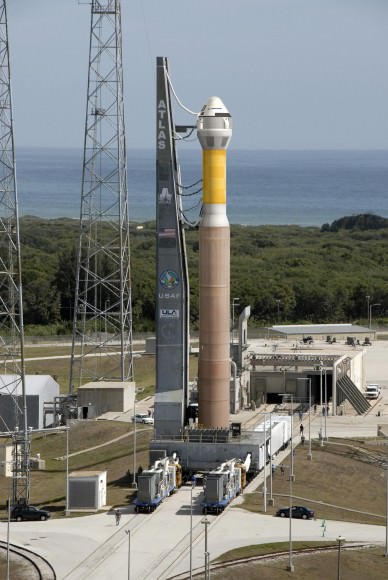
United Launch Alliance (ULA) builds the two stage Atlas V and is responsible for human rating the vehicle which has a virtually unblemished launch record of boosting a wide array of advanced US military satellites and NASA’s precious one-of-a-kind robotic science explorers like Curiosity, JUNO, MAVEN and MMS on far flung interplanetary voyages of discovery.
What modifications are required to man rate the Atlas V to launch humans on Boeing’s CST-100?
“We will launch on an Atlas V that’s being retrofitted to meet NASA’s NPR human rating standards for redundancy and the required levels of fault tolerance,” Ferguson explained.
“So the rocket will have all the safety NASA wants when it flies humans.”
“Now with the CST-100 you can do all that in a smaller package [compared to shuttle].”
“The Atlas V will also be modified by ULA to include an Emergency Detection System (EDS). It’s a system not unlike what Apollo and Gemini had, which was much more rudimentary but quite evolved for its day.”
“Their EDS would monitor critical parameters like pitch, roll, yaw rates, critical engine parameters. It measures the time to criticality. You know the time to criticality for certain failures is so short that they didn’t think humans could react to it in time. So it was essentially automated.”
“So if it [EDS] sensed large pitch or yaw excursions, it would self jettison. And the escape system would kick in automatically.”
The Atlas V is already highly reliable. The EDS is one of the few systems that had to be added for human flights?
“Yes.”
“We also wanted a better abort system performance to go with the two engine Centaur upper stage we elected to use instead of the single engine Centaur.”
The purpose is to shut down the Centaur engine firing [in an emergency].”
“The two engine Centaur has flown many times. But it has never flown on an Atlas V. So there is a little bit of recertification and qualification to be done by ULA to go along with that also.”
Does that require a lot of work?
“ULA doesn’t seem to think the work to be done is all that significant. There is some work to be done.”
So it’s not a showstopper. Can ULA meet your 2017 launch schedule?
“Yes.”
“Before an engine fails it vibrates. So when you talk about automated ‘Red Lines’ you have to be careful that first you “Do No Harm” – and not make the situation even worse.”
“So we’ll see how ULA does building this,” Ferguson stated.
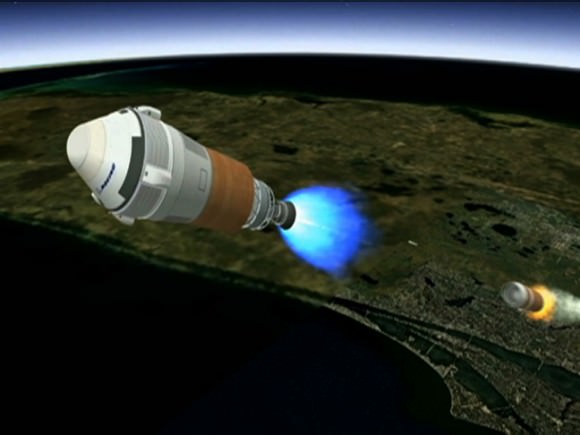
The future of the CST-100 project hinges on whether NASA awards Boeing a contract to continue development and assembly work in the next round of funding (dubbed CCtCAP) from the agency’s Commercial Crew Program (CCP). The CCP seed money fosters development of a safe, reliable and new US commercial human spaceship to low Earth orbit as a public/private partnership.
NASA’s announcement of the CCP contract winners is expected around late summer 2014.
Based on my discussions with NASA officials, it seems likely that the agency could select at least two winners to move on – to spur competition and thereby innovation – from among the trio of American aerospace firms competing.
Besides Boeing’s CST-100, the SpaceX Dragon and Sierra Nevada Dream Chaser vehicles are also in the running for the contract to restore America’s capability to fly humans to Earth orbit and the International Space Station (ISS) by 2017.
In Part 3 we’ll discuss with Chris Ferguson the requirements for how many and who will fly aboard the CST-100 and much more. Be sure to read Part 1 here.
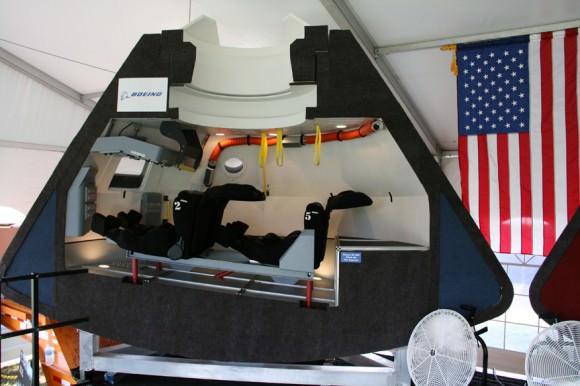
Stay tuned here for Ken’s continuing Boeing, SpaceX, Orbital Sciences, commercial space, Orion, Curiosity, Mars rover, MAVEN, MOM and more planetary and human spaceflight news.
………
Ken’s upcoming presentation: Mercy College, NY, May 19: “Curiosity and the Search for Life on Mars” and “NASA’s Future Crewed Spaceships.”

